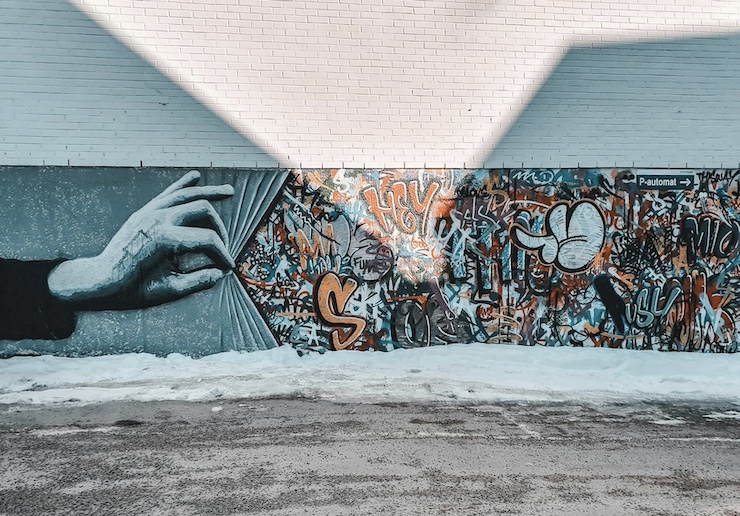Drones Are Removing Illegal Graffiti Art in Washington State

Graffiti artists have been using drones for years to spray paint building walls and public infrastructure – especially bridge overpasses – with their colorful artwork, sometimes transforming cityscapes for the better.
But now, faced with a rising tide of street graffiti that many angry local residents find vulgar and offensive, some state and city transportation officials are turning to drones to spray paint over the illicit artwork.
A recent example is Washington State, where state officials just received a special $1 million budget allocation to offset the rapidly rising cost of their annual graffiti removal operations.
The reason? Transportation officials say they’re having trouble keeping up with the graffiti artists who are spray painting more widely and in more remote and inaccessible areas of public infrastructure that are more difficult – and risky – for their maintenance crews to reach from the ground.
The budget allocation was approved last week after Gov. Jay Inslee signed a bill authorizing the expenditure. The state DOT is expected to focus its drone spray efforts on graffiti around Interstate 5, from Tacoma to Seattle, and in the north Spokane corridor.
“The explosion of graffiti in our state has become a serious concern that demands an immediate and comprehensive response,” Rep. Andrew Barkis (R-Olympia), who sponsored the bill, said in a statement. “This bill acknowledges the frustration Washingtonians feel about graffiti on our roadways and sends a clear message that enough is enough. We cannot continue allowing the actions of a few to shape the narrative of our communities.”
Industry experts note that spray drones are more commonly used on farms as a way of dispensing seeds, fertilizer and pesticides to target areas of higher soil fertility or plant stress and to maximize yields. In addition, a growing number of companies have pioneered the use of spray drones to wash windows on tall office buildings and skyscrapers.
The inspiration for drone-based graffiti removal operations began with an inventor couple in San Jose, California who won an annual city technology contest back in 2017. The couple had equipped a small quadcopter drone with a spray canister that could be triggered remotely to release white paint as it hovered in front of graffiti-covered walls.
Back then, San Jose was spending $1 million a year on graffiti control, using ground crews equipped with cumbersome cranes and ladders. State officials noted that shutting down traffic to conduct these operations reduced industry commerce and interrupted residential commutes, further congesting highway traffic.
The couple’s invention received strong praise from the San Jose mayor, who pledged to adopt the concept. Other states and cities – and niche drone companies like Tsuru Robotics – also took notice. Today, more advanced drone models, capable of operating in swarms and equipped with more sophisticated spray nozzle systems, are now widely available.
Until recently, the main obstacle to implementing drone-based graffiti removal was regulatory: FAA guidelines generally prohibited flying drones over people and traffic. But state DOTs like Washington’s are now in a position to obtain FAA exemptions to allow them to exploit the aircraft.
The program authorized in Washington last week will commence in June and is expected to last a year.
“I am confident that this pilot program will make significant strides in combating graffiti vandalism and re-establishing a culture of respect for our shared spaces,” bill sponsor Barkis said in a statement.
|